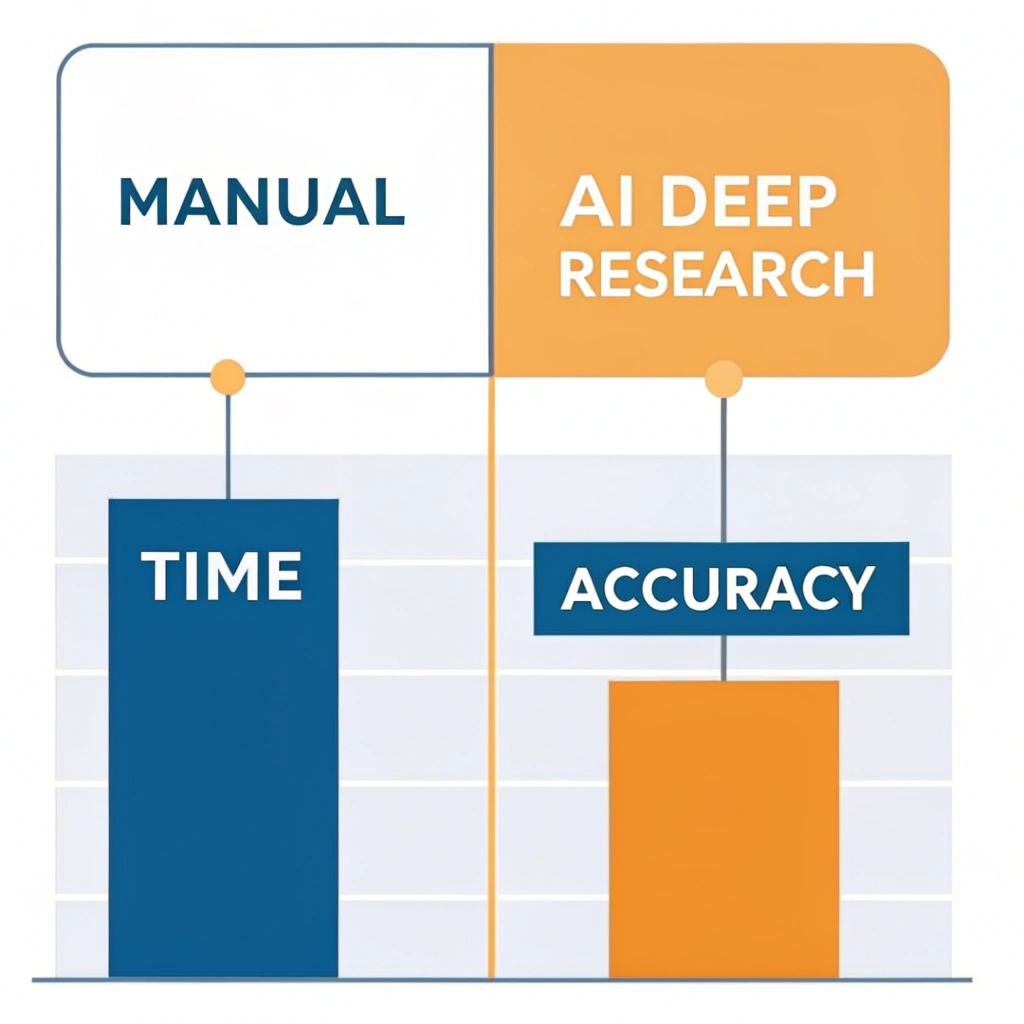What Is AI Deep Research?
Why the Next Generation of Browsers Will Think With You, Not For You
There’s a quiet revolution happening right under your fingertips. Not in the cloud. Not in your social feed. Right there — in your browser tab.
We used to think “research” meant typing keywords into Google, opening twelve tabs, and pretending we’d read them all. (You didn’t. None of us did.) But the game has changed.
AI Deep Research is the phase shift — the moment when the internet stops being a library and starts being a lab partner. And if you’ve played around with browsers that come with built-in AI agents (like the ones being developed by Sigma Browser), you’ve probably already felt that shift — even if you couldn’t name it yet.
The End of Search as We Knew It
The old workflow was simple. You: ask. The web: answer.
Except… it didn’t really answer, did it?
You got 10 blue links. Then more links. Then ads. Then a headache.
“Searching” turned into “sifting,” and the hours disappeared into tab purgatory.
AI Deep Research fixes that — or at least tries to.
Instead of fetching pages, an AI agent reads, reasons, compares, filters, and summarizes. It builds a mental model of your question and hunts down truth instead of text.
You ask,
it thinks.
Then it shows its work.
So, What Is Deep Research, Exactly?
In short: it’s not about answers. It’s about understanding.
Where old-school search engines rely on ranking algorithms and keyword hits, AI Deep Research uses semantic reasoning, source triangulation, and contextual learning to draw conclusions that make sense — not just sound smart.
Let’s break it down:
It’s not just “smarter Google.” It’s the evolution of knowledge retrieval itself.
A (Very) Brief History of How We Got Here

Deep Research in Action: How It Actually Works
Picture this: you’re researching “how AI regulation impacts small businesses.”
In a traditional search engine, you’d type that phrase, open 8 articles, skim 3, read 1.5, and end up with half-baked notes.
AI Deep Research, on the other hand, will:
- Crawl credible academic, news, and policy databases.
- Identify key terms (“regulation,” “compliance cost,” “AI SMEs”).
- Cross-verify facts from multiple perspectives.
- Highlight contradictions and consensus points.
- Summarize results — with citations.
It’s recursive. It learns from your follow-ups. And — unlike your human research assistant — it never forgets what you said five minutes ago.
Why the Browser Is the New AI Hub
There’s a reason Deep Research works best inside a browser.
Because that’s where the data is.
It’s where your PDFs, journals, blog posts, and chats live.
When your AI sits inside your browser — as it does in Sigma — it can:
- Understand what tabs are open and summarize them.
- Pull live context from your current page.
- Continue a research thread across days.
- Build memory of what you’re working on (without breaking privacy).
That’s the big leap: moving from “chatbot next to browser” → to “AI inside the browser.”
You’re no longer jumping between tools. You’re thinking through the web itself.
The Numbers Don’t Lie
According to McKinsey (2024), knowledge workers spend nearly 19% of their week just searching for information. Not writing. Not producing. Just looking.
Meanwhile, an internal study by OpenAI and Berkeley AI Lab found that structured AI-driven research reduced task completion time by 63%, while improving recall accuracy by 48%.
That’s not hype. That’s a workflow revolution.

AI Deep Research and the Death of “Tab Overload”
Let’s be honest: most of us are digital hoarders.
We keep tabs open like they’re emotional support animals.
But it’s not just messy — it’s cognitively expensive.
Every tab is a tiny open loop in your brain. You’re tracking it, subconsciously. That constant micro-stress kills focus.
AI browsers solve this by summarizing, bookmarking, or remembering context so you can close the clutter without losing the thread.
You don’t need 27 tabs open anymore. You just need one — with an AI that remembers what’s inside the others.
The Human-AI Partnership
Deep Research doesn’t make humans obsolete. It makes them amplified.
Humans are still the judgment layer — the final arbiter of meaning, nuance, and ethics.
AI just clears the intellectual underbrush so you can see the forest again.
Or, as one Stanford researcher put it in 2025:
“AI deep reasoning isn’t replacing cognition — it’s compressing the chaos between question and clarity.”
That’s not automation. That’s augmentation.
Who Benefits Most?
Let’s call it what it is: a productivity cheat code.
- Writers & journalists get faster source synthesis.
- Researchers & students get digestible literature reviews.
- Entrepreneurs & analysts get real-time market scans.
- Casual learners just… finally finish reading something.
And because tools like Sigma integrate deep research directly into your browsing flow, there’s zero friction. You don’t have to “go somewhere else” to learn. You just stay — and think.
The Ethics and Trust Question
Here’s the messy part: trust.
AI Deep Research systems are only as good as their data.
A 2025 MIT study found that models trained on unverified sources had a 35% higher hallucination rate than those using curated, citation-first frameworks.
That’s why transparency matters. The best systems show citations, confidence scores, and reasoning traces — not just polished answers.
The moment AI hides how it knows something, it stops being research and starts being dogma.
The Future of Research Is Conversational
The next wave of the web will feel less like “searching” and more like discussing.
You won’t query the internet — you’ll talk to it.
Imagine brainstorming a policy paper, debating pros and cons, checking stats, and generating citations — all in one conversational thread, inside your browser.
That’s the reality Sigma and similar platforms are building toward.
You and the web. Co-thinking.
Final Reflection
We’re living through a weird, wonderful shift — from collecting information to collaborating with it.
AI Deep Research is that bridge: a fusion of logic, language, and learning that finally helps us think at the speed of curiosity.
It’s not just about smarter answers.
It’s about building intelligence together.
FAQ
1: Is AI Deep Research reliable enough for academic work?
A: It’s getting there. Use it as a partner — not a replacement — and always verify citations.
2: Can I use Deep Research for creative projects?
A: Absolutely. It can find obscure influences, analyze patterns, or summarize data trends in seconds.
3: Does it work in real time?
A: In AI browsers, yes. It retrieves and reasons on live web data, not static snapshots.
4: What’s the best way to start?
A: Try exploring a browser with an integrated AI agent — like Sigma Browser — and start by asking it to “summarize” or “compare” rather than “search.”





.avif)




